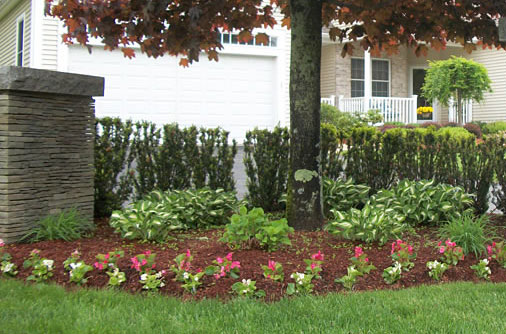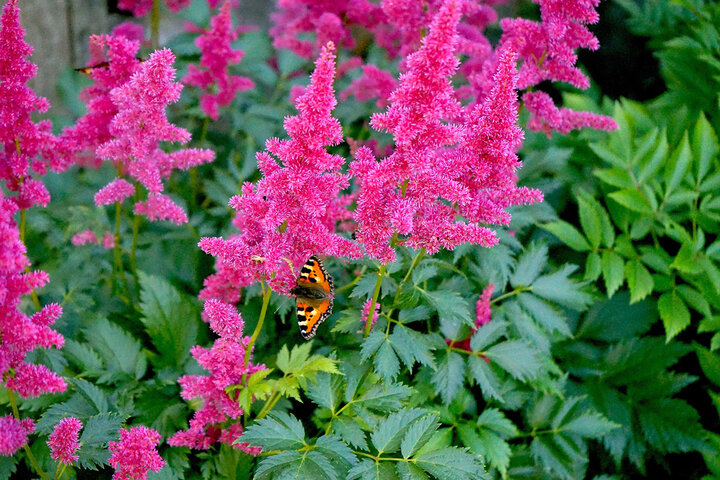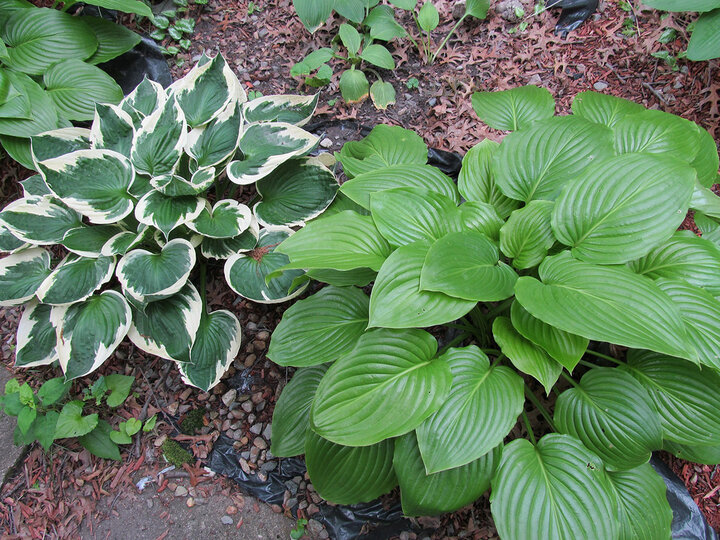Sarah Browning, Nebraska Extension Educator

Remove grass beneath trees where too much shade exists for good turf growth and replace it with shade-loving ornamentals.
Growing grass is almost impossible in the heavy shade created by mature trees and many gardeners struggle with the best method for managing this difficult area of their landscape, but it is possible to have attractive plantings in these shaded locations, while still preserving the tree's health. Here are a few tips for creating a beautiful shade garden underneath your trees.
Don't Install a Raised Bed
Some homeowners try to manage the problem of bare soil beneath mature trees by installing raised planting beds, however, this practice is strongly discouraged for several reasons. First, adding soil over the top of an existing tree's root system reduces the amount of oxygen that can penetrate into the underlying soil. Oxygen is essential for root health and growth, and a lack of oxygen will result in root death. Often trees begin an imperceptible decline after the installation of a raised planter that does not become noticeable for 2-5 years. Even the addition of only a few inches of soil can have harmful effects on your trees.
Dramatically raising the soil level under trees can cause other problems as well, including bark decay from soil moisture that is held against the trunk. Bark death and decay leads to wood rot of the tree's interior wood, resulting in reduced tree strength and a shortened life for the tree.
Homeowners are also often frustrated when these beds quickly fill with dense, fibrous tree roots. Studies have shown that trees have a majority of their feeder or surface roots within the top 12-18 inches of the soil. Roots will quickly fill the raised bed as the tree roots search for water, nutrients and oxygen.

To preserve the health of your tree but still have attractive plantings in the shaded areas they create, use ground level plantings. To enrich the soil and improve aeration and drainage, begin by spreading a 2-inch layer of organic matter on the soil surface. Compost or well-rotted manure is best. This will get your new plants off to a good start by providing additional organic matter, improving soil drainage and relieving any soil compaction that exists.
Carefully incorporate this material into the soil to a depth of 4-6 inches. This is best done by hand rather than with a tiller, which can damage important tree roots. Too much disturbance to the roots of sensitive trees like oaks, may damage or kill them.

Planting Maintenance Tips: Purchase small-sized plant material that won't require large planting holes and will cause as little root disturbance as possible during planting. Locate the new plants in open spaces between the tree's roots; if you run into a large root while digging, move a few inches to either side and dig a new hole. Take care not to damage the bark of mature tree roots when you dig.
Finally, proper maintenance of trees and ornamental plants includes deep, infrequent watering equivalent to one inch of water per week from either rain or irrigation. One good, deep soaking per week is ideal during the first weeks of establishment for the new plants. Gradually reduce the frequency of watering to once every two weeks to optimize the health of your tree and ornamentals. Add 2-4 inches of organic mulch after planting is completed to moderate soil temperatures and preserve soil moisture.
Images by Pixabay.com
- Astilbe, sometimes known as false spirea, is available in many heights and flower colors and are great perennials for a shade garden.
- Hosta plants are a great addition to a shade garden.
Search Our Archive
Associated Video
Under Tree Plant Selection
UNL Extension Horticulture Assistant Kathleen Cue gives us tips on plants that thrive under trees. University of Nebraska-Lincoln.